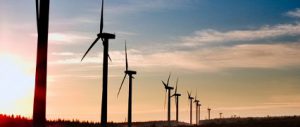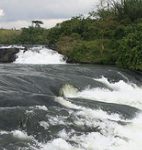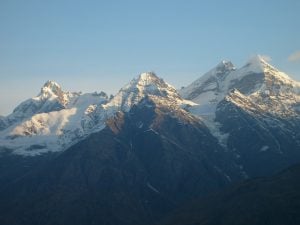At the foot of a towering gorge slicing through southern Ethiopia, the Omo River suddenly disappears into a tunnel bored into the rock face. Excavators claw at the soil and stone in the exposed riverbed beyond, where a giant concrete wall will soon appear in the ravine.
At 243 metres the Gibe III dam will be the highest on the African continent, a controversial centrepiece of Ethiopia’s extraordinary multibillion-dollar hydroelectric boom.
The country that prides itself as the “water tower of Africa” plans to end an energy shortage by building a network of mega-dams on the web of rivers that tumble down from its highlands.
By 2020, with the help of Italian and Chinese construction firms, Ethiopia will, it hopes, have increased its power generation capacity 15-fold and become a significant exporter of electricity to the region.
“For a developing country like ours, the dams are a must,” said Abdulhakim Mohammed, head of generation construction at the Ethiopian Electric Power Corporation (EEPCo). “Power is everything.”
But the pace and scale of the hydro projects have alarmed environmental groups, who say proper impact assessment studies are not being carried out.
Gibe III, which will have a generating capacity of 1,870 megawatts (MW) – double what was available in all of Ethiopia last year – has sparked the greatest opposition.
In March, a coalition of campaign groups, including International Rivers, based in Berkeley, California, and Survival International, based in London, launched an online petition with the aim of stopping the dam, warning of potentially disastrous social and economic effects for tribes downstream. [The dam’s builders have rejected the assertions.]
“It’s an unnecessary, highly destructive project,” said Terri Hathaway, Africa campaigner for International Rivers.
Nobody disputes the urgent need for additional electrical power in Ethiopia. In rural areas, where the bulk of the 80 million Ethiopians live, only 2% of households get access to electricity and the capital, Addis Ababa, has been hit by electricity blackouts.
Meanwhile, a fast-growing economy and high population growth has caused the demand for electricity to rise by 25% each year, according to EEPCo.
The country’s topography makes hydropower an obvious solution. Lake Tana, in Ethiopia, is the source of, and provides 85% of the water for, the Blue Nile, one of the two main tributaries of the Nile. The country also has another dozen large river basins. By some estimates, due to the volume of water cascading to the lowlands, the country has got the potential to generate 45,000 MW of hydropower, putting it second in Africa only to the Democratic Republic of Congo.
While Ethiopia has approved plans for several new hydro schemes in the coming years, including a giant 2,100 MW project on the Blue Nile, which will also serve Sudan and Egypt, a number of dams have already been built, or are almost complete. The 150-kilometre-long reservoir created by Gibe III will stretch to the tail of the 420 MW Gibe II power project, which was opened in January by the Italian construction company Salini.
Further north, Salini is also constructing a power plant near Lake Tana, while Sinohydro, the Chinese firm that helped build the famous Three Gorges Dam across the Yangtze River, has just completed another.
The dam-building frenzy is about much more than simply lighting up Ethiopians’ homes. For some, it is about viewing the country’s rivers in the same way as other nations view their oil or mineral wealth: a valuable source of foreign currency.
In the next few years, Ethiopia plans to start transmitting power to its neighbours. The construction of transmission lines to Djibouti and Sudan has begun, and a supply agreement has been reached with Kenya. If all goes well, electricity could become Ethiopia’s most valuable export.
“The potential [for selling electricity] is tremendous,” said Mohammed. “We will eventually connect to Egypt and possibly on to Europe. We might even supply southern Africa.”
But the government strategy faces one big problem: funding. With a price tag of 1.55 billion euros (US$1.88 billion), Gibe III was always going to require external credit. But Ethiopia decided to proceed before financing was secured, and awarded the contract to Salini without tender and without completing an environmental impact study or consulting communities downstream. The process violated the transparency policies of potential lenders such as the World Bank, preventing involvement.
In 2008, two years after the project began, an environmental study was finally published, and the African Development Bank (AfDB), which is considering providing a loan for the still under-funded project, is now conducting its own review.
While few people will be displaced by the dam, up to 500,000 people living further down in the Omo valley and around Kenya’s Lake Turkana, which is fed by the Omo, could be adversely affected, according to International Rivers. The dam will end the river’s natural flood cycle, which herders and farmers have relied on for centuries, and reduce the water level in Lake Turkana, the organisation says.
International Rivers argues that stopping the project will not hurt Ethiopia’s people, since the other dams are likely to more than meet the country’s internal demand to electricity.
But the government has dismissed environmental concerns about Gibe III. And in a sign that it intends pursuing its mega-dam strategy – and avoiding having environmental groups damage efforts at getting funding from international lenders, as has happened with Gibe III – it is looking east for help. Sinohydro had already agreed to build the 1,600 MW Gibe IV dam further down the Omo, a project sure to generate further controversy. The Chinese government will provide the finance.
Power struggle
A World Bank report on African infrastructure, published last November, contained a remarkable statistic: the 48 sub-Saharan Africa countries, with 800 million people, generate the same amount of electricity as Spain, which has a population of 45 million.
The authors identified power as the continent’s biggest infrastructure challenge. More than 30 countries, from economic giants such as South Africa to minnows such as Sierra Leone, face regular shortages, while prices are often more than double than elsewhere in the developing world, due to high operating costs and limited competition.
Lack of investment is the main reason. In 1970, shortly after most sub-Saharan African countries had achieved independence, these nations had three times the electricity generation capacity per person of South Asia. By 2000 the picture had reversed, with South Asia having nearly double the per-capita power levels of sub-Saharan Africa.
The trend has continued, according to the World Bank, with the average individual electricity consumption in sub-Saharan Africa barely enough to light a 100-watt bulb for three hours a day. And the capacity is falling.
To meet its power needs, sub-Saharan Africa needs to spend US$41 billion a year on infrastructure, mostly on new projects, the report concludes.
https://www.guardian.co.uk/
Copyright Guardian News and Media Limited 2010
Homepage image from International Rivers



